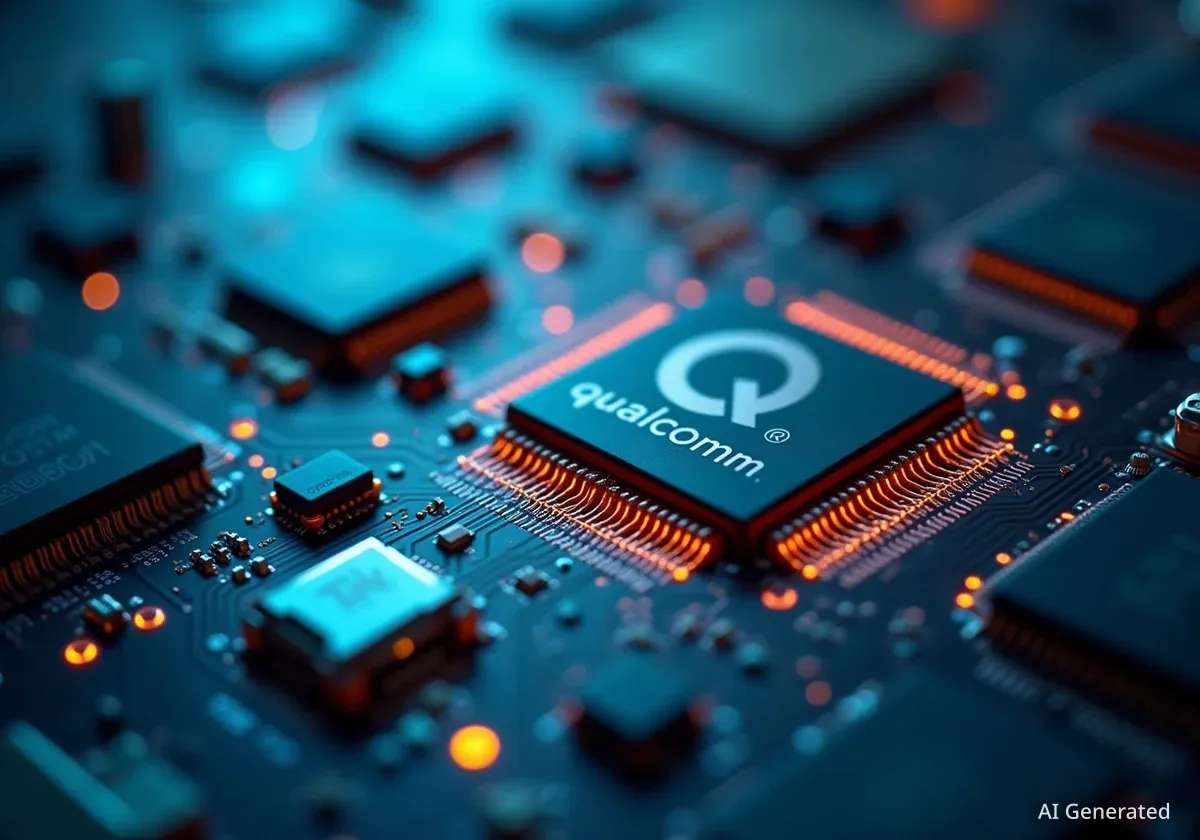Semiconductor giant Qualcomm has acquired Arduino, the company behind the popular open-source electronics platform. The acquisition, announced at a joint event in Turin, is a strategic move to strengthen Qualcomm's position in the growing edge computing and artificial intelligence markets. Alongside the announcement, the companies unveiled the first collaborative product, the Arduino UNO Q, a single-board computer powered by a Qualcomm chip.
Despite the acquisition, both companies have stated that Arduino will continue to operate as an independent entity, maintaining its brand and community focus. The financial terms of the deal were not disclosed.
Key Takeaways
- Qualcomm has acquired Arduino to enhance its presence in edge AI and developer ecosystems.
- Arduino is set to remain an independent company, preserving its open-source mission.
- A new product, the Arduino UNO Q, was launched, featuring a Qualcomm Dragonwing processor.
- The UNO Q combines a Linux-capable CPU with a real-time microcontroller, targeting both high-performance and control applications.
- The move positions Qualcomm to integrate its AI technologies more directly into projects built by developers and makers.
A Strategic Partnership for Edge Computing
Qualcomm's acquisition of Arduino signals a significant push into the developer and maker communities, a market where the chip manufacturer has historically had limited direct engagement. The primary goal is to make Qualcomm's advanced edge technologies more accessible to a broader audience of creators, from students to industrial system designers.
By partnering with Arduino, Qualcomm gains a direct channel to a vast global community that uses the platform for prototyping and developing commercial products. This allows Qualcomm's hardware and AI models to be integrated into a wide array of edge devices.
"We will benefit tremendously from this Arduino partnership, as we are mainly a B2B company, and we need to be more accessible to the developer community," stated Nakul Duggal, Group General Manager of Automotive and Industrial & Embedded IoT at Qualcomm.
Duggal added, "What we are seeing today is an opportunity to make the edge so much more capable." This sentiment highlights the strategic importance of empowering developers to build sophisticated AI-powered applications on accessible hardware.
Maintaining Arduino's Independence
For the large community of Arduino enthusiasts, a key concern with any acquisition is the potential loss of the platform's open and independent spirit. Both Qualcomm and Arduino have moved to address these concerns, emphasizing that Arduino will not be absorbed into Qualcomm's corporate structure. It will retain its brand, leadership, and commitment to open-source principles.
Introducing the Arduino UNO Q
The first product to emerge from this collaboration is the Arduino UNO Q, described as the most powerful Arduino board to date. It is designed to compete directly with other single-board computers like the Raspberry Pi, offering features for both high-level computing and real-time control.
Dual-Brain Architecture
The UNO Q features what the company calls a "dual-brain" design. This architecture includes a powerful central processing unit (CPU) capable of running a full desktop operating system, alongside a separate microcontroller unit (MCU) for precise, real-time tasks.
- CPU: The board is powered by Qualcomm's Dragonwing QRB2210 system-on-chip (SoC), which includes four Kryo cores, an Adreno 702 GPU, and a dual-core digital signal processor (DSP).
- MCU: For real-time operations, the UNO Q integrates an STM32U5-series microcontroller from STMicroelectronics.
This combination allows developers to run complex applications, such as machine learning models and web servers on Debian Linux, while simultaneously managing sensors, motors, and other hardware with the reliability of a dedicated microcontroller.
UNO Q Technical Specifications
The new board includes a modern feature set, including Wi-Fi and Bluetooth connectivity, eMMC flash storage, and standard Arduino header connectors for compatibility with existing shields. It also introduces new high-speed connectors on its underside to leverage the full capabilities of the Qualcomm SoC.
A New Development Environment and AI Integration
To support the new hardware, Arduino has also launched a new developer environment called App Lab. This platform is designed to streamline the development process across the UNO Q's dual-processor architecture, allowing users to write real-time code for the MCU and Linux applications for the CPU within a unified interface.
A central focus of the new platform is artificial intelligence. App Lab is integrated with the AI development platform Edge Impulse, which Qualcomm acquired earlier this year. This integration aims to simplify the process of building, training, and deploying AI models on the UNO Q.
Developers will also be able to import pre-trained models from the Qualcomm AI Hub, further lowering the barrier to entry for creating sophisticated AI-powered edge devices.
"Joining forces with Qualcomm Technologies allows us to supercharge our commitment to accessibility and innovation," said Arduino CEO Fabio Violante. "The launch of UNO Q is just the beginning – we're excited to empower our global community with powerful tools that make AI development intuitive, scalable, and open to everyone."
Market Position and Availability
With the UNO Q, Arduino and Qualcomm are positioning themselves as a strong competitor to the Raspberry Pi. When asked about the differences, an Arduino spokesperson pointed to the dual-brain architecture and the use of a standard version of Debian, in contrast to Raspberry Pi OS, which is a derivative of Debian.
The ability to use the UNO Q as a standalone desktop computer by connecting a keyboard, mouse, and monitor further solidifies its position as a versatile single-board computer for a wide range of projects.
Pricing and Release Information
The Arduino UNO Q will be available in two configurations from the official Arduino Store and its network of distributors:
- A model with 2 GB of RAM and 16 GB of eMMC storage is available for order now at a price of €39 ($44).
- A higher-spec version with 4 GB of RAM and 32 GB of eMMC storage will be available for order next month for €53 ($59).
This strategic acquisition and product launch represents a significant step for Qualcomm in making its powerful AI and computing technology accessible to a wider audience, potentially shaping the future of development in robotics, industrial IoT, and consumer electronics.





